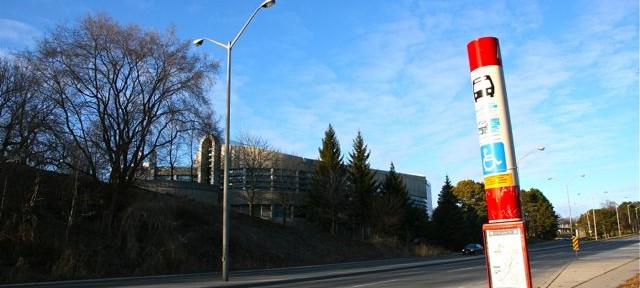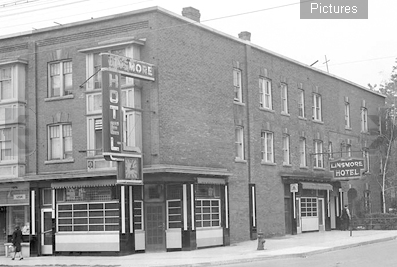Nation that pioneered the era of modern vacationing pines for good old days
This article first appeared in the Toronto Star on April 23, 2011. Johnny Barnes is still going strong, but Princess and Caravan cruise lines have since slashed their visits to Bermuda.
By STEPHEN WICKENS

HAMILTON, BERMUDA – Johnny Barnes rises before the sun every weekday and walks three kilometres to Crow Lane roundabout.
There, from 5 to 10 a.m., the 87-year-old waves and blows kisses, often yelling, “Bless you, have a wonderful day.” Commuters enthusiastically honk and wave back, a few yelling things such as, “Johnny! We love you.”
The show of affection has gone on for nearly three decades, rain or shine. So when a doctor’s appointment recently forced him to miss a day, media outlets and the police were flooded with phone calls.
Barnes might now be as much of an icon in Bermuda as those shorts that make otherwise serious men look like Cub masters. Even tourists make the pilgrimage to Johnny’s corner these days.
“I used to think he was nuts,” cab driver Robbie Powell says. “But now the whole country treasures Johnny. There’s already a great statue of him, though it probably won’t be moved to the roundabout till after he’s gone.”
Stop and talk with Barnes and he’ll pray for you. On this early April day, he joins hands with a couple of Canadians and beseeches God to grant us, among other things, a safe trip home. But maybe, with a national debate raging and page one of the Bermuda Sun declaring this the “Last chance to save tourism,” Barnes’s prayers should focus on luring more visitors to this sub-tropical Atlantic Ocean paradise a 1,000 kilometres off the North Carolina coast.
Bermuda is renowned among those who love to fish for marlin, tuna and barracuda. It’s a mecca for divers seeking shipwrecks and coral reefs to explore. If you love historic forts, litter-free streets, golf, luxury accommodations, friendly service and gorgeous beaches, it may be the place for you.
But if you must soak up the sun on those beaches, wait till mid-April, when the return of summer-like weather is heralded by migrating humpback whales and sightings of an iconic bird, the Bermuda longtail. And if you’re less than wealthy, consider housekeeping accommodations and trips to the supermarket so you can cook some of your meals.
Bermuda is many things, but it’s not a Caribbean destination for winter sun seekers and it’s not cheap. Those are probably the key underlying causes of the angst gripping an island that in some ways pioneered the era of modern tourism.
It fell off the radar for most Canadians when the loonie plumbed record depths in the 1980s and ‘90s. Though many have returned and our dollar is worth more than the greenback (to which Bermuda’s dollar is pegged, one to one), prices can sting like the Portuguese man o’ war you’ll be warned of on some of the pink sand beaches.
“We’re counting on Canadians; Canada is our second largest market,” William Griffith, the island’s tourism director said at a conference on sustainable travel put on by the Caribbean Tourism Organization. “Your strong dollar and the fact WestJet started competing with Air Canada has had an impact.”
Overall visitor totals have rebounded slightly since the worst of the recession that began in 2008, and the Canadian total rose 22 per cent in 2010. But politicians, industry people and media are conducting a surprisingly frank and open debate for a tourist destination—and with good reason.
Since the 1980s, trips to the island are off more than 50 per cent while 83 hotels have closed. Tourism remains the No. 2 industry behind financial services, but now accounts for less than 5 per cent of overall economic activity.

An exhibit at the National Museum, part of the renovated Royal Navy Dockyard, views the heyday of tourism as something very much in the past.
“When the music changes, so must the dance,” Bermuda’s Canadian-born, McGill-educated Premier Paula Cox says. “Our tourism infrastructure became, in many cases, outdated.”
Things are costly on the island partly because it’s so remote and small. It’s the sixth-densest nation on earth (No. 8 if you include Vatican City and Monaco) and unlike Hong Kong and Singapore, it has no high-rises to speak of. Except for fish and a few vegetables, food is imported. Along with the land shortage, real estate values have soared in recent decades on a flood of insurance company money and wealth from people seeking favourable tax treatment.
Whether it’s worthwhile for the island to spice up its nightlife, add casinos or reach a little bit down-market is part of the current debate.
But one thing is certain, the extremely wealthy have first dibs on where to vacation, and you don’t have to be on this island long to know why so many still choose Bermuda.
JUST THE FACTS
ARRIVING: Served by WestJet and Air Canada, it’s only a 2½-hour flight from Toronto.
SLEEPING: Fairmont’s Princess and the Rosedon are jewels in Hamilton, the capital city. For a wide range of more modestly priced guest houses, B&Bs and housekeeping units, try this link. More than a dozen hotels are offering every third night free in April, every fourth night in May and every fifth in June.
DINING: Supermarket prices are higher than Toronto, but a good option if you feel pinched in restaurants. If you ask locals picks for reasonably priced restaurants, you will undoubtedly hear Mad Hatters and the Lemon Tree Café, both in Hamilton. At the west end of the island, the Frog and Onion’s home brew beers and pub style food are a hit. If you’re at the nearby Bonefish, ask for Bermudian-style fish, even if it’s not on the menu. It comes in a white sauce that is surprisingly light (too bad about the overdone veggies it came with). Most places charge a gratuity up front. It’s usually 15-17 per cent, meaning you’re not expected to tip. The splurge: The Waterlot Inn has been serving great filet mignon since 1670. If you’re in the Waterlot, check out the wine list: it’s a tome with offerings worth up to $1,500 a bottle.
DRINKING: The Dark and Stormy, considered the national cocktail, is one part Gosling’s Black Seal rum and two parts Barritt’s ginger beer. The “Rum Swizzle” combines dark and light rums with orange and pineapple juice, fresh lime, grenadine and Angostura bitters.
GETTING AROUND: Most roads lack sidewalks, so pedestrians should remember to walk facing into traffic, which in Bermuda is on the right side. Cars were not legal until 1946, and they’re still restricted – one per household. Tourists may not rent them. Mopeds and scooters are an option. Service provided by hard-to-miss pink buses is good. Tokens are $2.50 each. Taxis and ferries are also big parts of the transportation system.
DOING: If you have time, clear skies and the energy to climb the 185 steps, Gibb’s Hill Lighthouse, built in 1846, is a great place to survey the hook-shaped island. But no map of the place is complete without the surrounding rings of reefs, some of which were still islands that provided initial refuge for shipwrecked first residents (clearly, the seas are rising). It’s believed there are as many as 300 wrecks in the vicinity.

DON’T MISS: St. George, the original capital, is the oldest English city in the Western Hemisphere and is now a UNESCO world heritage site. In centuries hence, if people look for great landmarks of the British Empire the way modern man looks at relics of Rome, Bermuda and its many forts may be viewed as the best example. The Royal Navy Dockyard has been transformed for tourists in recent years, complete with facilities for mega cruise ships. It’s a history buff’s delight and artist Graham Foster’s four-wall mural in the Commissioner’s building is stunning. Fort St. Catherine, at the island’s east end is the best of the forts. Also, make to time to walk the streets of Hamilton, a place where pieces of public sculpture outnumber pieces of litter. Even the indigents use the trash bins.






